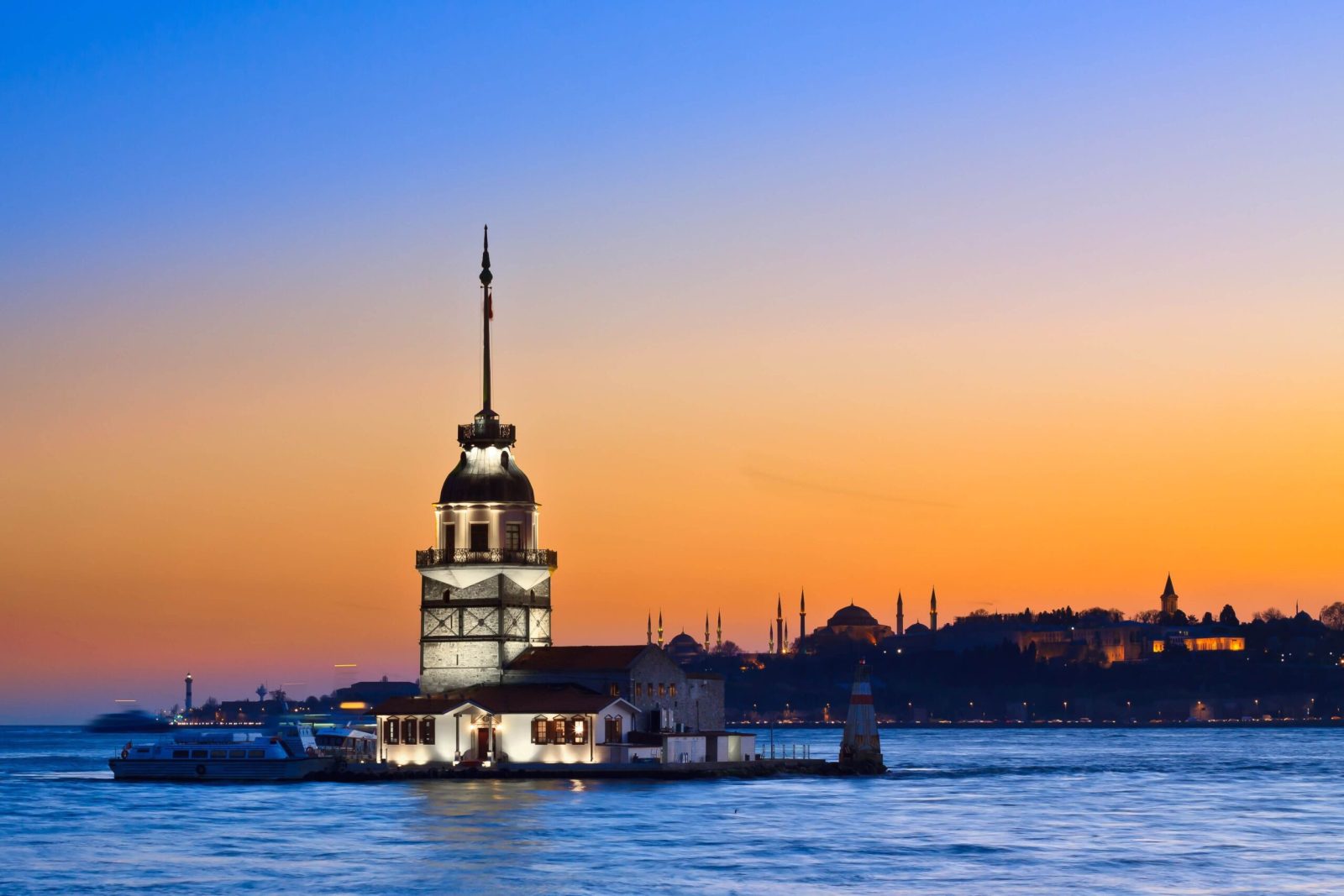
At the southern entrance to the Bosphorus strait in Istanbul, Turkey, 200 meters (220 yards) from the coast of Üsküdar, is a tower known as the Maiden’s Tower (Turkish: Kiz Kulesi), also known as Leander’s Tower (Tower of Leandros) since the medieval Byzantine period.
After the naval victory at Cyzicus, it’s possible that the ancient Athenian general Alcibiades built a customs station for ships coming from the Black Sea on a small rock in front of Chrysopolis, which is now Üsküdar. During his reign as emperor of the Byzantine Empire, Alexius Comnenus constructed a stone wall around a wooden tower. The tower was connected to another tower on the European side of the water, in the Constantinople neighborhood of Mangana, by an iron chain. The island was later linked to the Asian mainland by a defensive wall, remnants of which can be seen today in the water. In 1453, when Constantinople (now Istanbul) fell to the Ottoman Empire, a Byzantine garrison led by Venetian Gabriele Trevisano was stationed in the tower. The Ottoman Turks turned the structure into a watchtower during the reign of Sultan Mehmed the Conqueror.
As a result of the earthquake in 1509 and the subsequent fire in 1721, the tower, which was incorrectly called Leander’s Tower in reference to the legend of Hero and Leander (which took place in the Dardanelles strait, also known as the Hellespont in antiquity), was completely destroyed. Since then, it has served as a lighthouse, with subsequent repairs to the surrounding walls occurring in 1731 and 1734 before its stone construction in 1763. Beginning in 1829, the tower served as a quarantine facility until its restoration by Sultan Mahmud II in 1832. Steel supports were added as a precaution after the 17 August 1999 earthquake, and the most recent restoration began in 1998 for the James Bond movie The World Is Not Enough.
A popular café and restaurant now occupy the tower’s interior, taking advantage of the building’s prime position and its breathtaking panorama of the city’s Roman, Byzantine, and Ottoman incarnations. Throughout the day, private boats travel to the tower to pick up visitors.
Legend
The tower and its origin have been the subject of numerous urban legends. The most well-known Turkish legend tells of an emperor who had a beloved daughter, who, according to the oracle, would be killed by a poisonous snake on her 18th birthday. The emperor built the tower in the middle of the Bosphorus to shield his daughter from harm until she turned eighteen, hoping to prevent her untimely demise by keeping her far from the land and its snakes. The princess was locked up in a tower, where she saw no one but her father on a regular basis.
The emperor, overjoyed that he had been able to thwart the prophecy, celebrated the princess’s 18th birthday by bringing her a basket of exotic, sumptuous fruits. However, as the oracle had predicted, when the princess reached into the basket, an asp that had been hiding among the fruit bit her, and she died in her father’s arms. The tower was originally built for a maiden, hence its name.
The older name of Leander’s Tower refers to yet another tale involving a young woman, this one from ancient Greek mythology. At Sestos, on the coast of the Hellespont, lived Hero, an Aphrodite priestess who inhabited a tower (Dardanelles). A young man named Leander (Leandros) from Abydos, on the other side of the Hellespont, fell in love with her and would swim across the strait every night to be with her. Each night, Hero would light a lamp atop her tower to help the hero find his way home.
Hero gave in to Leander’s charms and agreed to let him have sex with her after he argued that Aphrodite, the goddess of love, would look down on the worship of a virgin. The routine continued throughout the summer months. But on one particularly rough winter night, the waves threw Leander into the sea, Hero’s light was extinguished by the winds, and Leander became disoriented, eventually drowning. As a result of her loss, Hero committed suicide by jumping off the tower. There is a possibility that this ancient tale is also the source of the name “Maiden’s Tower.”
Because the Dardanelles and the Bosphorus are close to each other and look similar, the tower got mixed up with Leander’s story.
Currently, the Tower
These days, the ground floor houses the restaurant, and the tower’s summit houses the café.
From 1966 to 1981, the tower appeared on the back of Turkish 10 lira banknotes.